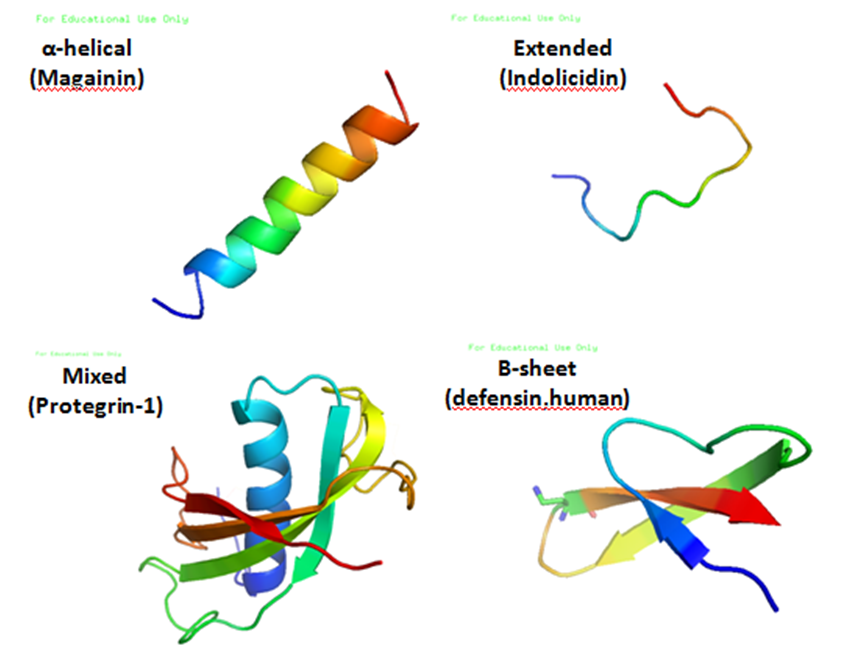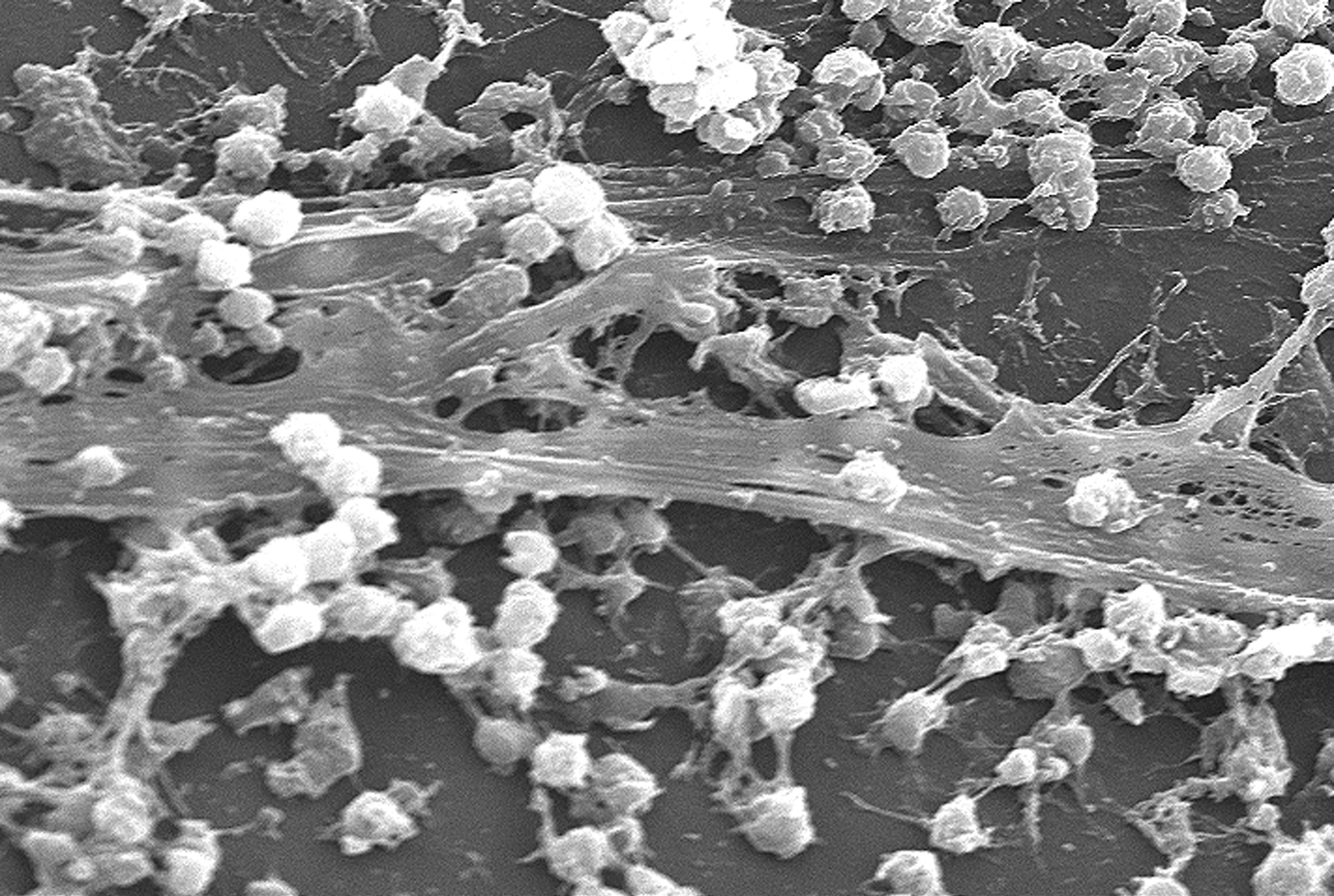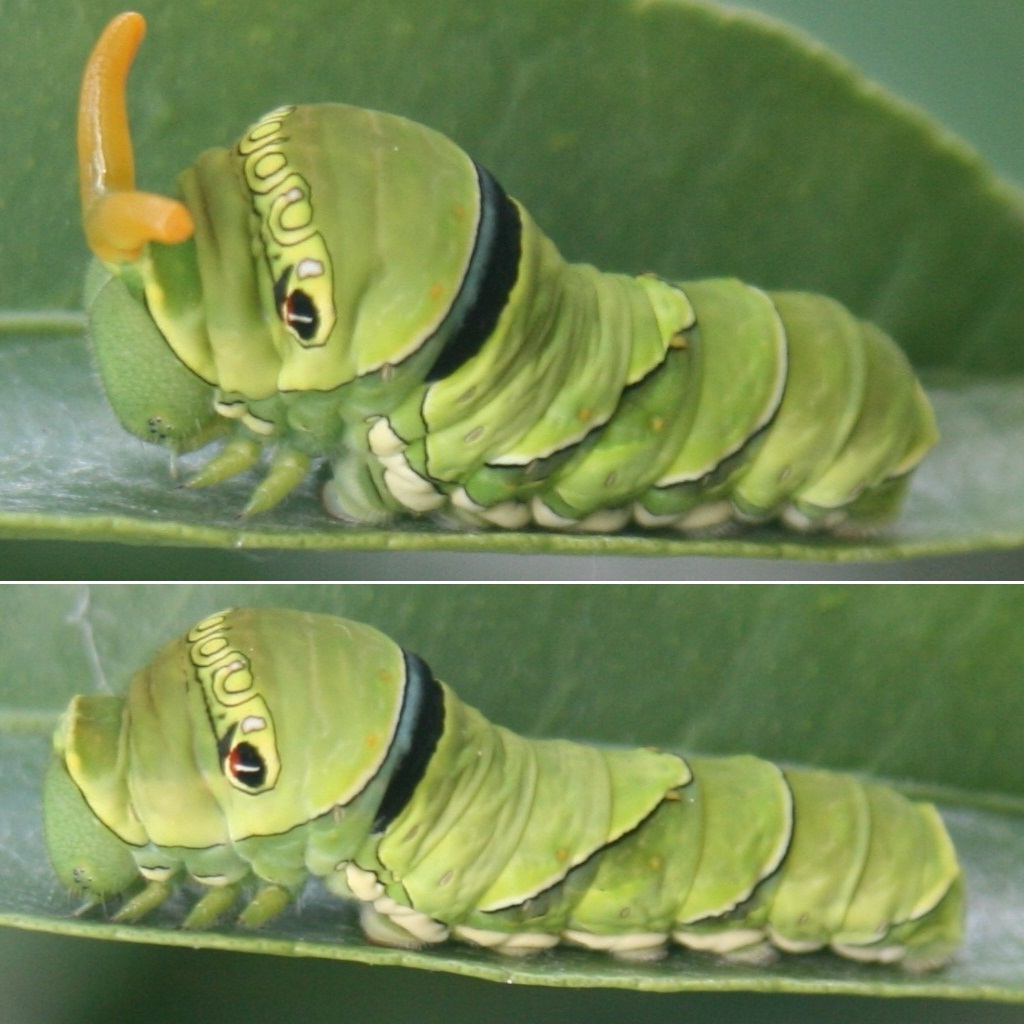|
Cecropin
Cecropins are antimicrobial peptides. They were first isolated from the hemolymph of '' Hyalophora cecropia'', whence the term cecropin was derived. Cecropins lyse bacterial cell membranes; they also inhibit proline uptake and cause leaky membranes. Cecropins constitute a main part of the innate immune system of insects. Cecropins are small proteins anywhere from 31 - 37 amino acids long and are active against both gram-positive and gram-negative bacteria. Cecropins isolated from insects other than '' Hyalophora cecropia'' (Cecropia moth) have been given various names, such as bactericidin, , and sarcotoxin. All of these peptides are structurally related. Members Members include: ;Cecropin A: Peptide Sequence (KWKLFKKIEKVGQNIRDGIIKAGPAVAVVGQATQIAK). Secondary structure includes two α helices. At low peptide to lipid ratios ion channels are formed, at high peptide to lipid ratios pores are formed. ;Cecropin B: Peptide Sequence (KWKVFKKIEKMGRNIRNGIVKAGPAIAVLGEAKAL). Secondar ... [...More Info...] [...Related Items...] OR: [Wikipedia] [Google] [Baidu] |
Antimicrobial Peptides
Antimicrobial peptides (AMPs), also called host defence peptides (HDPs) are part of the innate immune response found among all classes of life. Fundamental differences exist between Prokaryote, prokaryotic and eukaryota, eukaryotic cells that may represent targets for antimicrobial peptides. These peptides are potent, broad spectrum antimicrobials which demonstrate potential as novel therapeutic agents. Antimicrobial peptides have been demonstrated to kill Gram negative and Gram positive bacteria, enveloped viruses, fungi and even transformed or cancerous cells. Unlike the majority of conventional antibiotics it appears that antimicrobial peptides frequently destabilize biological membranes, can form transmembrane channels, and may also have the ability to enhance immunity by functioning as immunomodulators. Structure Antimicrobial peptides are a unique and diverse group of molecules, which are divided into subgroups on the basis of their amino acid composition and structure. A ... [...More Info...] [...Related Items...] OR: [Wikipedia] [Google] [Baidu] |
Antimicrobial Peptide
Antimicrobial peptides (AMPs), also called host defence peptides (HDPs) are part of the innate immune response found among all classes of life. Fundamental differences exist between prokaryotic and eukaryotic cells that may represent targets for antimicrobial peptides. These peptides are potent, broad spectrum antimicrobials which demonstrate potential as novel therapeutic agents. Antimicrobial peptides have been demonstrated to kill Gram negative and Gram positive bacteria, enveloped viruses, fungi and even transformed or cancerous cells. Unlike the majority of conventional antibiotics it appears that antimicrobial peptides frequently destabilize biological membranes, can form transmembrane channels, and may also have the ability to enhance immunity by functioning as immunomodulators. Structure Antimicrobial peptides are a unique and diverse group of molecules, which are divided into subgroups on the basis of their amino acid composition and structure. Antimicrobial peptides ... [...More Info...] [...Related Items...] OR: [Wikipedia] [Google] [Baidu] |
Hyalophora Cecropia
''Hyalophora cecropia'', the cecropia moth, is North America's largest native moth. It is a member of the family Saturniidae, or giant silk moths. Females have been documented with a wingspan of or more. These moths can be found predominately across the east of North America, with occurrences as far west as Washington and north into the majority of Canadian provinces. Cecropia moth larvae are most commonly found on maple trees, but they have also been found on cherry and birch trees among many others. The species was first described by Carl Linnaeus in his 1758 10th edition of ''Systema Naturae''. Life cycle Like other members of the giant silk moth family, the adult cecropia moth lacks functional mouth parts and a digestive system. Due to this, they survive approximately two weeks. To find a mate, the female cecropia moth emits pheromones which the male detects with its sensitive antennae. Male cecropia moths can detect these pheromones from up to a mile away, although a ma ... [...More Info...] [...Related Items...] OR: [Wikipedia] [Google] [Baidu] |
Biofilm
A biofilm is a Syntrophy, syntrophic Microbial consortium, community of microorganisms in which cell (biology), cells cell adhesion, stick to each other and often also to a surface. These adherent cells become embedded within a slimy extracellular matrix that is composed of extracellular polymeric substances (EPSs). The cells within the biofilm produce the EPS components, which are typically a polymeric combination of extracellular polysaccharides, proteins, lipids and DNA. Because they have a three-dimensional structure and represent a community lifestyle for microorganisms, they have been metaphorically described as "cities for microbes". Biofilms may form on living (biotic) or non-living (abiotic) surfaces and can be common in natural, industrial, and hospital settings. They may constitute a microbiome or be a portion of it. The microbial cells growing in a biofilm are physiology, physiologically distinct from planktonic cells of the same organism, which, by contrast, ... [...More Info...] [...Related Items...] OR: [Wikipedia] [Google] [Baidu] |
Sarcotoxin
Sarcotoxins are a group of antibacterial peptides present in the flesh fly belonging to the genus '' Sarcophaga''. The proteins are present in the haemolymph of the flesh fly. The first protein, called sarcotoxin 1A, was discovered in 1983 from '' Sarcophaga peregrina'' by Masayuki Okada and Shunji Natori at the University of Tokyo, Japan. The name Sarcotoxin is derived from the peptide's discovery in ''Sarcophaga'' flies, and so antibacterial compounds were given the name Sarcotoxin and an identifying number or letter. However many Sarcotoxins are homologues of Cecropins or Attacins, and are not unique to ''Sarcophaga'' flies. References {{Reflist External linksDescription at COPE Antimicrobial peptides [...More Info...] [...Related Items...] OR: [Wikipedia] [Google] [Baidu] |
Papilio Xuthus
''Papilio xuthus'', the Asian swallowtail, Chinese yellow swallowtail, Japanese Swallowtail, Korean Swallowtail or Xuthus swallowtail, is a yellow-colored, medium to large sized swallowtail butterfly found in northeast Asia, northern Myanmar, southern China, Taiwan, the Korean Peninsula, Japan (from Hokkaidō to the Yaeyama Islands), Siberia and the Hawaiian Islands. The butterfly has been observed thrice in New Zealand. Once in Dunedin in 1996 emerging from a chrysalis in a car yard specializing in Japanese used cars; it is thought the chrysalis arrived through one of the cars. and later in Auckland in 2011 and 2016. It was also recorded in the state of Arunachal Pradesh, India, in 2014. It mates multiple times in its life, leading to an increased genetic diversity in its young. It is preyed upon by a host of organisms, including the tree cricket ''Oecanthus longicauda'', ant ''Lasius niger'', and wasps (''Polistes'' and ''Trogus mactator''). ''P. xuthus'' utilizes color visi ... [...More Info...] [...Related Items...] OR: [Wikipedia] [Google] [Baidu] |
Galleria Mellonella
''Galleria mellonella'', the greater wax moth or honeycomb moth, is a moth of the family Pyralidae. ''G. mellonella'' is found throughout the world. It is one of two species of wax moths, with the other being the lesser wax moth. ''G. mellonella'' eggs are laid in the spring, and they have four life stages. Males are able to generate ultrasound, ultrasonic sound pulses, which, along with pheromones, are used in mating. The larvae of ''G. mellonella'' are also often used as a model organism in research. The greater wax moth is well known for its Parasitism, parasitization of honeybees and their hives. Because of the economic loss caused by this species, several control methods including heat treatment and chemical fumigants such as carbon dioxide have been used. The caterpillar of ''G. mellonella'' has attracted interest for its ability to degrade Polyethylene, polyethylene plastic. Geographic range ''G. mellonella'' was first reported as a pest in Asia, but then spread to nort ... [...More Info...] [...Related Items...] OR: [Wikipedia] [Google] [Baidu] |
Nalidixic Acid
Nalidixic acid (tradenames Nevigramon, NegGram, Wintomylon and WIN 18,320) is the first of the synthetic quinolone antibiotics. In a technical sense, it is a naphthyridone, not a quinolone: its ring structure is a 1,8-naphthyridine nucleus that contains two nitrogen atoms, unlike quinoline, which has a single nitrogen atom. Synthetic quinolone antibiotics were discovered by George Lesher and coworkers as a byproduct of chloroquine manufacture in the 1960s; nalidixic acid itself was used clinically, starting in 1967. Nalidixic acid is effective primarily against Gram-negative bacteria, with minor anti-Gram-positive activity. In lower concentrations, it acts in a bacteriostatic manner; that is, it inhibits growth and reproduction. In higher concentrations, it is bactericidal, meaning that it kills bacteria instead of merely inhibiting their growth. It has historically been used for treating urinary tract infections, caused, for example, by ''Escherichia coli'', ''Proteus'', ''Shi ... [...More Info...] [...Related Items...] OR: [Wikipedia] [Google] [Baidu] |
UPEC
''Escherichia coli'' ( ; commonly abbreviated ''E. coli'') is a gram-negative, rod-shaped bacterium that is commonly found in the lower intestine of warm-blooded organisms (endotherms). Most ''E. coli'' strains are harmless, but pathogenic varieties cause serious food poisoning, septic shock, meningitis, or urinary tract infections in humans. Unlike normal flora ''E. coli'', the pathogenic varieties produce toxins and other virulence factors that enable them to reside in parts of the body normally not inhabited by ''E. coli'', and to damage host cells. These pathogenic traits are encoded by virulence genes carried only by the pathogens. Introduction ''E. coli'' and related bacteria constitute about 0.1% of gut flora, and fecal–oral transmission is the major route through which pathogenic strains of the bacterium cause disease. Cells are able to survive outside the body for only a limited amount of time, which makes them ideal indicator organisms to test environmental samp ... [...More Info...] [...Related Items...] OR: [Wikipedia] [Google] [Baidu] |
Choristoneura Fumiferana
''Choristoneura fumiferana'', the eastern spruce budworm, is a species of moth of the family Tortricidae native to the eastern United States and Canada. The caterpillars feed on the needles of spruce and fir trees. Eastern spruce budworm populations can experience significant oscillations, with large outbreaks sometimes resulting in wide scale tree mortality. The first recorded outbreaks of the spruce budworm in the United States occurred in about 1807, and since 1909 there have been waves of budworm outbreaks throughout the eastern United States and Canada. In Canada, the major outbreaks occurred in periods circa 1910–20, c. 1940–50, and c. 1970–80, each of which impacted millions of hectares of forest. Longer-term tree-ring studies suggest that spruce budworm outbreaks have been recurring approximately every three decades since the 16th century, and Paleoecology, paleoecological studies suggest the spruce budworm has been breaking out in eastern North America for thousands ... [...More Info...] [...Related Items...] OR: [Wikipedia] [Google] [Baidu] |
Spruce Budworm
''Choristoneura'' is a genus of moths in the family Tortricidae. Several species are serious pests of conifers, such as spruce and are known as spruce budworms. Species *'' Choristoneura adumbratanus'' (Walsingham, 1900) *'' Choristoneura africana'' Razowski, 2002 *''Choristoneura albaniana'' (Walker, 1863) *'' Choristoneura argentifasciata'' Heppner, 1989 *'' Choristoneura biennis'' Freeman, 1967 *'' Choristoneura bracatana'' (Rebel, in Rebel & Rogenhofer, 1894) *'' Choristoneura carnana'' (Barnes & Busck, 1920) *'' Choristoneura chapana'' Razowski, 2008 *'' Choristoneura colyma'' Razowski, 2006 *'' Choristoneura conflictana'' (Walker, 1863) *'' Choristoneura diversana'' (Hubner, 814-1817 *'' Choristoneura evanidana'' (Kennel, 1901) *'' Choristoneura expansiva'' X.P.Wang & G.J.Yang, 2008 *'' Choristoneura ferrugininotata'' Obraztsov, 1968 *'' Choristoneura fractivittana'' (Clemens, 1865) *'' Choristoneura freemani'' Razowski, 2008, western spruce budworm *''Choristoneura fumi ... [...More Info...] [...Related Items...] OR: [Wikipedia] [Google] [Baidu] |
Ascaris Suum
''Ascaris suum'', also known as the large roundworm of pig, is a parasitic nematode that causes ascariasis in pigs. While roundworms in pigs and humans are today considered as two species (''A. suum'' and '' A. lumbricoides'') with different hosts, cross-infection between humans and pigs is possible; some researchers have thus argued they are the same species. Ascariasis is associated with contact to pigs and pig manure in Denmark. ''A. suum'' is distributed worldwide and grows up to in length. ''Ascaris'' infections are treated with ascaricides. ''A. suum'' is in the family Ascarididae, and is one of the oldest associations to mankind. Life cycle Pigs get infected with ''A. suum'' by ingesting infectious parasite eggs that are present in the environment. The larvae of Ascaris complete two moults within the egg; therefore, the larvae emerging from the egg is not a second-stage larva (L2) as was previously presumed, but rather a third stage larva (L3) covered by a loosened ... [...More Info...] [...Related Items...] OR: [Wikipedia] [Google] [Baidu] |






